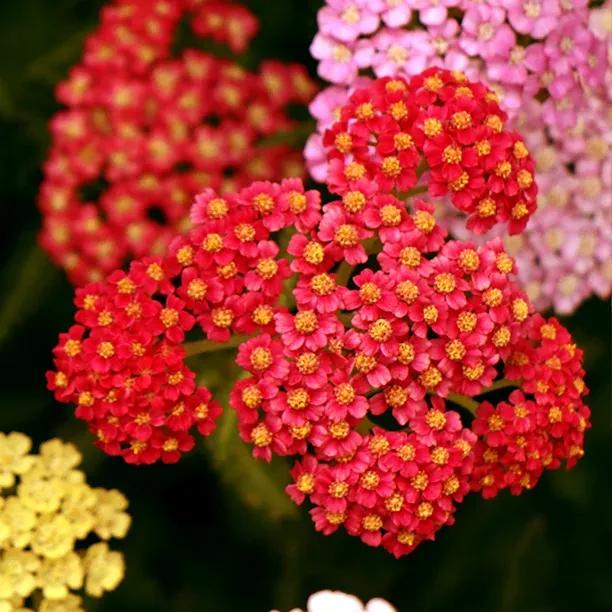Walther Funcke Yarrow Plants
The details
Yarrow
Pot Grown Herbaceous Perennials- Colour: Orange-beige
- Flowering: Jun-Sep
- Foliage: Mid-green
- Height: 1.1m
- Spread: 40cm
- Spacing: 40cm
- Position: Sun
- Soil: Any well-drained soil
Recommended extras
Description
Achillea Walther Funcke
If unusual plant descriptions are your thing, then Achillea Walther Funcke (sometimes spelt Walter Funke) should be right up your street. On paper (or screen), the flower colours sound a bit odd - starting off terracotta-orange (some say brown) and fading like most yarrows do - to biscuit-beige! However, in real life this is one of the mellowest and yet eye catching colour combinations you can find. Not Tottenham Court Road in 1935 at all!
Combined with the divided, grey-green foliage, the flowers mature with the summer and if you leave them to dry on the plant, you'll get the tones of autumn and winter, too.
Great In Your Garden...
With earthy tones, he looks great in a Piet Oudolf-style prairie planting scheme. As it begins flowering well before most of the other well-used perennials in such designs, such as Rudbeckia Goldsturm (golden yellow) and Echinacea Art's Pride (warm orange), it extends the flowering season.
Its flowers mellow and change colour as they mature, performing a vital role in the border of bridging the gap between the seasons. Try him paired with grasses like Stipa gigantea (giant oat grass) and Molinia Windspiel.
If you're a flower arranger, his flower heads dry very well for use in winter arrangements with the likes of Helichrysum (strawflower) and the grasses it grows so well with.
This Achillea is also suitable for gravel gardens, large containers, low-maintenance, wildlife and architectural gardens.
Features
- Colour: Orange/terracotta fading to biscuit/beige.
- Flowering: June to September.
- Foliage: Mid-green deeply divided leaves.
- Height: 1.1m.
- Spread: 40cm.
- Spacing: 40cm.
- Position: Sun.
- Soil: Loam, chalk, sand, acid, alkaline, or neutral, well-drained.
Did You Know...
The leaves of yarrow help to heal clean cuts made by steel. Chewed leaves have astringent qualities that tighten the wound. Medieval soldiers would carry yarrow as part of their kit, leading to the common name Soldier’s Woundwort.
Planting Instructions
Plant in a sunny spot with good drainage. Add compost when planting but will perform on poorer soils. Space 60cm apart and water until established. Avoid sites that waterlog in winter and clay soils. Suitable for large containers.
Water well until established. Feed sparingly. Protect against aphids and powdery mildew. Divide in spring. Keep spent flower-heads on plants for winter interest.


